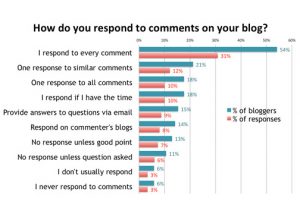— July 18, 2019

StockSnap / Pixabay
Refunds are a part of business regardless of whether you sell a tangible product or a digital product. However, the refund process is much different for a customer with a digital product as compared to a physical product.
Getting a refund for a digital product usually only requires an email. The buyer doesn’t have to make a trip back to the store or take a package to the post office. Because the refund process can be easy for customers, sellers need to take extra measures to protect themselves from too many refunds.
According to Easy Digital Downloads, a company that provides software for selling digital products, about 10% of all revenue originating from digital product sales will be refunded (source). That number can be a little misleading though, because some websites that sell digital products have a no-refund policy. For those that do offer a refund policy, the numbers can be considerably higher.
Some sellers choose to have a no-refund policy because they believe it will be best for the bottom line, but that’s not always the case. Buyers like to see a refund policy, and offering refunds can lead to more sales and higher overall profits.
Here are a few things you can do to minimize refunds, while still giving customers the confidence to buy without risk.
1. Have a Clearly Defined Refund Policy
Your refund policy should clearly define details like how long buyers have to request a refund, which circumstances justify a refund, and how the customer can initiate a refund. A clear policy will let buyers know what to expect before making a purchase, and if they do not meet the qualifications listed for the refund, you have the right to deny the request.
2. Make the Refund Conditional (if Possible)
You don’t necessarily need to offer a “no-questions-asked” refund. Some sellers of digital products choose to place certain stipulations on the refund, which can help to discourage serial refunders while still offering a legitimate guarantee for the average customer.
Admittedly, this works better with some types of digital products than others. For example, some online course creators require customers to show that they have done the work involved with the course in order to get a refund. They can’t simply get a refund because they changed their mind.
3. Create an Accurate Sales Page
One of the best things you can do to minimize refund requests is to provide customers with accurate information about your product before they buy. The more they know about the product, the better informed they will be and they can make a buying decision based on what they want.
Don’t stretch the truth (or worse) in your claims, and answer as many common questions as possible. This will reduce the number of people who buy your product, only to find out that it’s not quite what they were expecting.
4. Offer a Quality Product
Obviously, a poor-quality product is likely to lead to more refunds. Quality is a subjective measure and it really depends on what the custom is expecting from your product. Make sure that your product lives up to any claims or promises that you make, and try to over-deliver and exceed buyers’ expectations.
5. Target the Right Audience
The same digital product can be loved by one person and hated by another. Be sure that your marketing and ads are targeting the appropriate audience that will get most out of your product. If your marketing is off, you could wind up making sales, but with the wrong people buying your product, it will lead to more refunds.
6. Respond Quickly to Any Customer Service Issues
In many cases, customers will reach out for assistance before requesting a refund. In other cases, they may immediately request a refund, but you that doesn’t mean that you can’t try to address their issues and salvage the sale.
Regardless of whether the customer is asking for assistance or immediately requesting a refund, fast and helpful customer service will go a long way. Customers are often more influenced by the quality of service than the actual quality of the product itself (positively or negatively).
Be sure that you have a system in place to effectively handle any customer service requests, and with happy customers, you’ll be able to minimize refunds.
7. Notify Customers of How the Charge Will Appear on Their Credit Card Statement
If you’re selling through a platform that acts as the retailer, your business name may not appear on the customer’s credit card statement. And in some cases, a parent company or some other name that the buyer may not recognize will lead to confusion and credit card disputes. After the sale, be sure to tell customers what they should expect to see on their statements if it is not obvious.
If you offer a refund policy, you’re bound to have some refunds. However, by following these tips you will be able to minimize the negative impacts of refunds and sell more thanks to increased buyer confidence.
Digital & Social Articles on Business 2 Community
(79)







